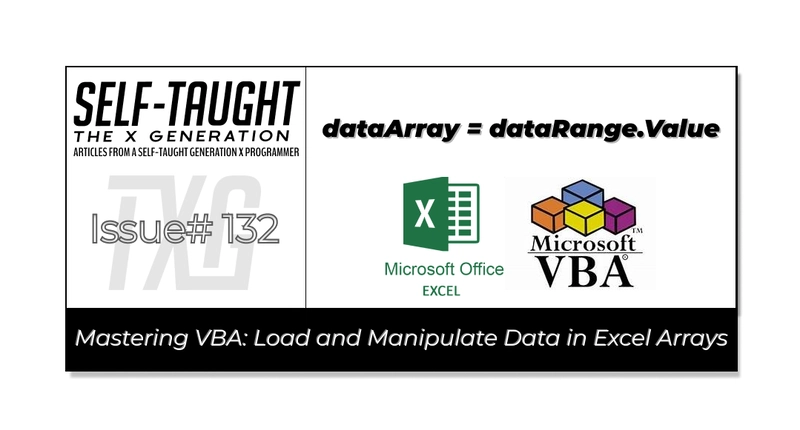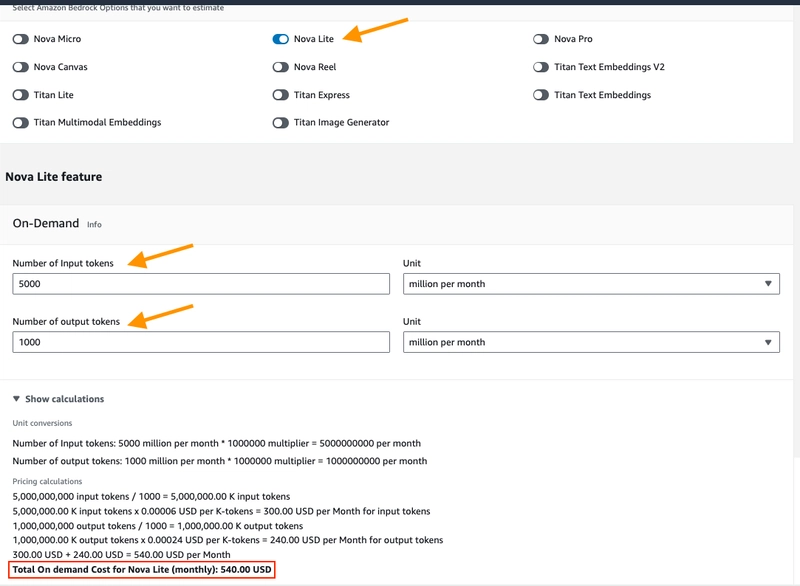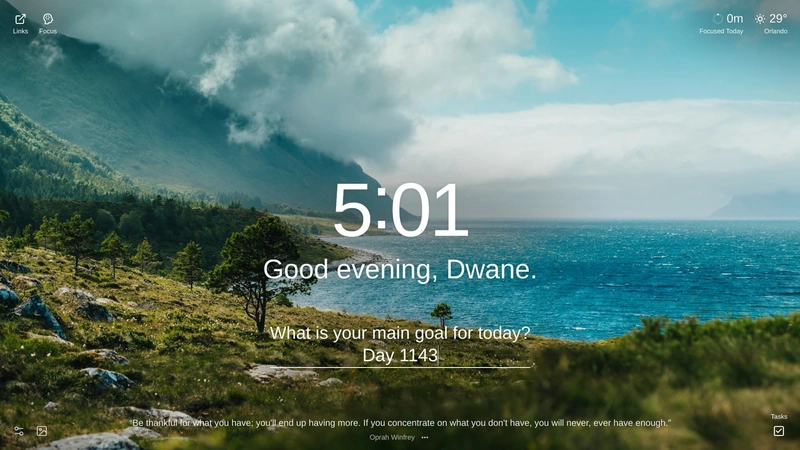Mastering VBA: Load and Manipulate Data in Excel Arrays
In this article, discover how to load data into an array using VBA in Excel. Master this skill to automate tasks, enhance data manipulation, and create efficient, custom applications for your projects! Why Load Data into an Array When creating Excel sheets to work with data from another source, such as exported data from a proprietary work system, loading that data into an array provides you with complete control over its manipulation. Combining built-in functions in an Excel worksheet template with exported data from an array allows you to accomplish incredible feats, such as building custom-made applications to streamline workflow. One such application I created in this manner is a truck driver route sheet. In a custom-made template, I added sum functions to calculate the total number of stops, the total amount of each customer’s invoices, and the grand total invoice amount on the truck. Using exported data containing all of the day’s customer orders loaded in an array, like magic, the user clicks an update button, and then the entire worksheet is filled out for them. This saved a lot of time as the data on these sheets were previously entered manually. By learning how to load and manage data in an array, you can create custom-made applications to streamline the workflow of companies you work for, making you an invaluable asset. Loading Data into an Array On an individual basis, you will need to learn how to export the required data into an Excel file from the proprietary work systems you use. If you're fortunate, someone might demonstrate it for you. In my case, I had to mostly figure it out on my own. For simplicity, let's use make-believe exported customer addresses from the Star Wars universe to load into an array: CUSTOMER CUSTOMER Name ADDRESS ZIP CODE TAT01 Tatooine Traders 123 Sand Dune Lane, Tatooine 12345 HOTH02 Hoth Ice Sculptures 456 Ice Cave Blvd, Hoth 67890 END03 Endor Ewok Emporium 789 Forest Path, Endor 11223 COR04 Coruscant Couture 101 Sky City Ave, Coruscant 33445 NAB05 Naboo Nifty Novelties 202 Lake Retreat Rd, Naboo 55678 TAT06 Tatooine Textiles 321 Desert Way, Tatooine 12345 HOTH07 Hoth Hot Drinks 654 Snowflake St, Hoth 67890 END08 Endor Exotic Exports 987 Treehouse Ln, Endor 11223 COR09 Coruscant Crafts 202 Galactic Blvd, Coruscant 33445 NAB10 Naboo Nature Goods 303 Waterfall Way, Naboo 55678 Steps to Load Data into an Array This section outlines how to load data from an Excel worksheet into an array using VBA, including setting up your environment, declaring variables, and executing the code. Setting Up the Environment: Enable the Developer tab in Excel to access the VBA editor and macro tools. For detailed steps, refer to my article "What is Microsoft VBA and Why You Should Learn It." Declaring Variables: wsData As Worksheet: References the worksheet containing the data. dataRange As Range: Defines the range of cells to be loaded into the array. lastRow As Long and lastCol As Long: Determine the data boundaries. dataArray As Variant: Stores the data for manipulation. i As Long: Counter for iterating through the array. message As String: Holds text for display in a message box. Loading Data from Excel into an Array Using VBA Below is a VBA subroutine demonstrating how to load data from an Excel worksheet into an array for efficient manipulation. Sub LoadDataIntoArray() Dim wsData As Worksheet Dim dataRange As Range Dim lastRow As Long Dim lastCol As Long Dim dataArray As Variant Dim i As Long Dim message As String ' Set the data worksheet Set wsData = ThisWorkbook.Sheets("Sheet1") ' Change "Sheet1" to your data sheet name ' Find the last row and column with data lastRow = wsData.Cells(wsData.Rows.Count, 1).End(xlUp).Row lastCol = wsData.Cells(1, wsData.Columns.Count).End(xlToLeft).Column ' Define the range to load into the array (excluding headers) If lastRow > 1 Then ' Ensure there are rows to process Set dataRange = wsData.Range(wsData.Cells(2, 1), wsData.Cells(lastRow, lastCol)) Else MsgBox "Not enough data to process." Exit Sub End If ' Load the data into the array dataArray = dataRange.Value ' Build the message string message = "Total Records: " & UBound(dataArray, 1) & vbCrLf & vbCrLf For i = 1 To UBound(dataArray, 1) message = message & "Record " & i & ": " For j = 1 To UBound(dataArray, 2) message = message & dataArray(i, j) & " " Next j message = message & vbCrLf Next i ' Display the message box with all data MsgBox message End Sub Explanation of the Steps Worksheet Setup: wsData references the worksheet. Ensure the sheet name matches your data sheet. Identify Data Boundaries: lastRow and lastCol determine the data's extent. Define Data Range: dataRange includes all data cells, e

In this article, discover how to load data into an array using VBA in Excel. Master this skill to automate tasks, enhance data manipulation, and create efficient, custom applications for your projects!
Why Load Data into an Array
When creating Excel sheets to work with data from another source, such as exported data from a proprietary work system, loading that data into an array provides you with complete control over its manipulation. Combining built-in functions in an Excel worksheet template with exported data from an array allows you to accomplish incredible feats, such as building custom-made applications to streamline workflow.
One such application I created in this manner is a truck driver route sheet. In a custom-made template, I added sum functions to calculate the total number of stops, the total amount of each customer’s invoices, and the grand total invoice amount on the truck. Using exported data containing all of the day’s customer orders loaded in an array, like magic, the user clicks an update button, and then the entire worksheet is filled out for them. This saved a lot of time as the data on these sheets were previously entered manually.
By learning how to load and manage data in an array, you can create custom-made applications to streamline the workflow of companies you work for, making you an invaluable asset.
Loading Data into an Array
On an individual basis, you will need to learn how to export the required data into an Excel file from the proprietary work systems you use. If you're fortunate, someone might demonstrate it for you. In my case, I had to mostly figure it out on my own.
For simplicity, let's use make-believe exported customer addresses from the Star Wars universe to load into an array:
| CUSTOMER | CUSTOMER Name | ADDRESS | ZIP CODE |
|---|---|---|---|
| TAT01 | Tatooine Traders | 123 Sand Dune Lane, Tatooine | 12345 |
| HOTH02 | Hoth Ice Sculptures | 456 Ice Cave Blvd, Hoth | 67890 |
| END03 | Endor Ewok Emporium | 789 Forest Path, Endor | 11223 |
| COR04 | Coruscant Couture | 101 Sky City Ave, Coruscant | 33445 |
| NAB05 | Naboo Nifty Novelties | 202 Lake Retreat Rd, Naboo | 55678 |
| TAT06 | Tatooine Textiles | 321 Desert Way, Tatooine | 12345 |
| HOTH07 | Hoth Hot Drinks | 654 Snowflake St, Hoth | 67890 |
| END08 | Endor Exotic Exports | 987 Treehouse Ln, Endor | 11223 |
| COR09 | Coruscant Crafts | 202 Galactic Blvd, Coruscant | 33445 |
| NAB10 | Naboo Nature Goods | 303 Waterfall Way, Naboo | 55678 |
Steps to Load Data into an Array
This section outlines how to load data from an Excel worksheet into an array using VBA, including setting up your environment, declaring variables, and executing the code.
Setting Up the Environment: Enable the Developer tab in Excel to access the VBA editor and macro tools. For detailed steps, refer to my article "What is Microsoft VBA and Why You Should Learn It."
Declaring Variables:
wsData As Worksheet: References the worksheet containing the data.dataRange As Range: Defines the range of cells to be loaded into the array.lastRow As LongandlastCol As Long: Determine the data boundaries.dataArray As Variant: Stores the data for manipulation.i As Long: Counter for iterating through the array.message As String: Holds text for display in a message box.
Loading Data from Excel into an Array Using VBA
Below is a VBA subroutine demonstrating how to load data from an Excel worksheet into an array for efficient manipulation.
Sub LoadDataIntoArray()
Dim wsData As Worksheet
Dim dataRange As Range
Dim lastRow As Long
Dim lastCol As Long
Dim dataArray As Variant
Dim i As Long
Dim message As String
' Set the data worksheet
Set wsData = ThisWorkbook.Sheets("Sheet1") ' Change "Sheet1" to your data sheet name
' Find the last row and column with data
lastRow = wsData.Cells(wsData.Rows.Count, 1).End(xlUp).Row
lastCol = wsData.Cells(1, wsData.Columns.Count).End(xlToLeft).Column
' Define the range to load into the array (excluding headers)
If lastRow > 1 Then ' Ensure there are rows to process
Set dataRange = wsData.Range(wsData.Cells(2, 1), wsData.Cells(lastRow, lastCol))
Else
MsgBox "Not enough data to process."
Exit Sub
End If
' Load the data into the array
dataArray = dataRange.Value
' Build the message string
message = "Total Records: " & UBound(dataArray, 1) & vbCrLf & vbCrLf
For i = 1 To UBound(dataArray, 1)
message = message & "Record " & i & ": "
For j = 1 To UBound(dataArray, 2)
message = message & dataArray(i, j) & " "
Next j
message = message & vbCrLf
Next i
' Display the message box with all data
MsgBox message
End Sub
Explanation of the Steps
Worksheet Setup:
wsDatareferences the worksheet. Ensure the sheet name matches your data sheet.Identify Data Boundaries:
lastRowandlastColdetermine the data's extent.Define Data Range:
dataRangeincludes all data cells, excluding headers.Load Data into Array: Data is loaded into
dataArrayfor processing.Error Handling: Ensures sufficient data is available; otherwise, it alerts the user.
After running the program, you will see a dialog box displaying the data loaded into the array. The message box will first indicate the total number of records processed. It will then list each record, showing the data from each row in the specified range of the Excel worksheet. If there is insufficient data to process, you will receive an alert indicating that more data is needed. This visual feedback verifies that the data has been correctly loaded and is ready for further manipulation or analysis.
My other related articles
Beginner's Guide to Customizing VBA: Code Editor Colors and More
Simplifying VBA Debugging: Real-Time Insights with Immediate and Locals Windows
From JavaScript to VBA: Navigating Variable Declaration and Management
Mastering Excel: VLOOKUP and Custom VBA Functions for Key-Value Data Retrieval
Mastering Excel's IFNA: Efficient Value Retrieval and VLOOKUP Integration












































































































































































![[The AI Show Episode 144]: ChatGPT’s New Memory, Shopify CEO’s Leaked “AI First” Memo, Google Cloud Next Releases, o3 and o4-mini Coming Soon & Llama 4’s Rocky Launch](https://www.marketingaiinstitute.com/hubfs/ep%20144%20cover.png)








































































































































































































![GrandChase tier list of the best characters available [April 2025]](https://media.pocketgamer.com/artwork/na-33057-1637756796/grandchase-ios-android-3rd-anniversary.jpg?#)












































.png?width=1920&height=1920&fit=bounds&quality=70&format=jpg&auto=webp#)

























.webp?#)































































































![Here’s everything new in Android 16 Beta 4 [Gallery]](https://i0.wp.com/9to5google.com/wp-content/uploads/sites/4/2024/11/Android-16-logo-top-down.jpg?resize=1200%2C628&quality=82&strip=all&ssl=1)











![New Beats USB-C Charging Cables Now Available on Amazon [Video]](https://www.iclarified.com/images/news/97060/97060/97060-640.jpg)

![Apple M4 13-inch iPad Pro On Sale for $200 Off [Deal]](https://www.iclarified.com/images/news/97056/97056/97056-640.jpg)



































































































































